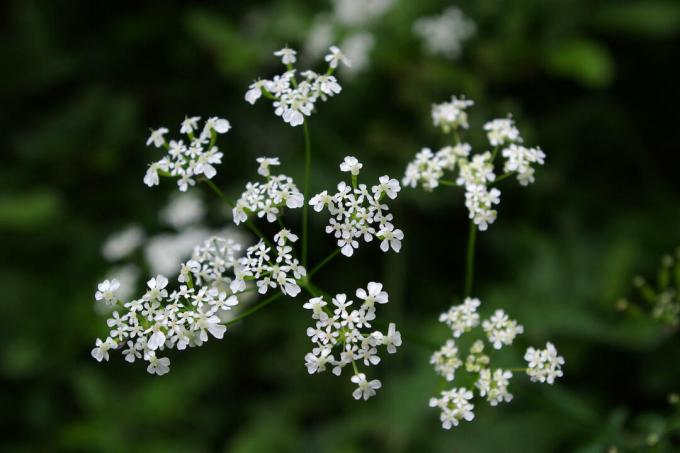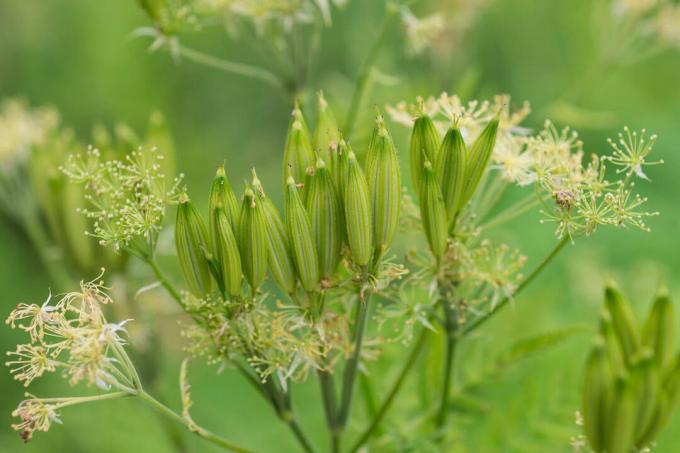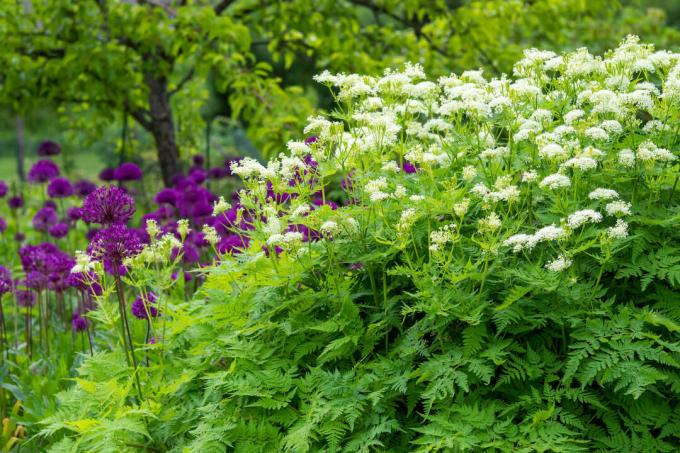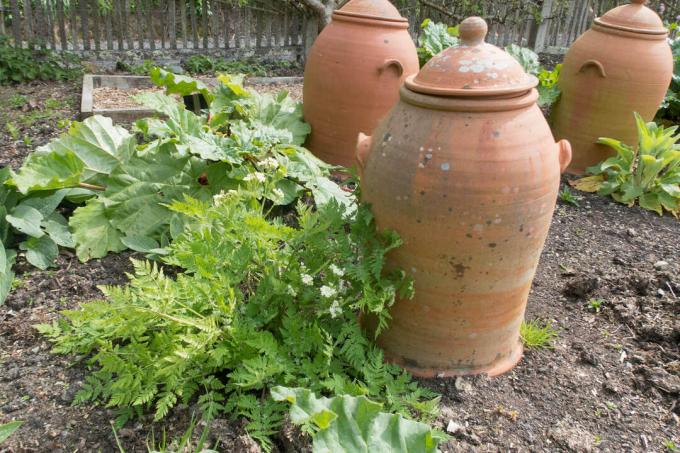The sweet umbel can be used in the scented and herb garden, but also simply as a decorative perennial in the garden. It is also very popular with bees.

Those who like liquorice and aniseed will love the sweet umbels. It smells very aromatic and tastes like the popular sweet. With us you can find out everything you need to know about the correct handling of the plant and receive tips for using it in the kitchen.
contents
- Sweet umbels: origin and characteristics
- Planting umbel: location and procedure
- Proper care
- Propagate umbel
- Harvest and use of umbels
Sweet umbels: origin and characteristics
To the genus of sweet umbels (Myrrhis) only belongs to one species, namely the sweet umbel (Myrrhis odorata). It belongs to the umbelliferae family and is also known as the myrrh chervil or Spanish chervil. The wild plant native to us used to grow in the mountains, but is now widespread throughout Europe and is even found in Chile. It can reach heights of up to 2 meters, but usually remains smaller. The perennial herbaceous plant bears white flowers that are arranged in double umbels. The large green leaves are multi-pinnate, have a fern-like appearance and are soft to the touch. The whole plant smells and tastes like anise and is therefore also used in the kitchen. When the sweet umbel is in bloom, from May to August, many insects also enjoy their white umbels.

Attention: The sweet umbel sees the spotted hemlock (Conium maculatum) quite similar. However, this is poisonous and must not be consumed. You should therefore only harvest the umbel if you are absolutely sure.
Planting umbel: location and procedure
The sweet umbel likes locations on humus, nutrient-rich and fresh to moist soil in partial shade, preferably in the shade of larger trees or bushes. If she gets a little more sun or shade, it doesn’t affect her health.
The umbel can be bought as a young plant or sown yourself.
The sweet umbels are best sown in autumn directly in the bed or in a pot. Since the sweet umbel to the Cold germs heard, the action of low winter temperatures on the seeds is necessary so that seedlings can be seen in the next spring between March and April. The umbel needs a lot of space and is therefore best planted individually or in groups of three at least 40 cm apart. If you want to keep the plant in the pot, it should be deep enough, as the sweet umbel forms a long taproot.
If you have acquired a young plant, it should not be planted out until May.

For planting in pots, it is best to use a nutrient-rich soil with a high humus content, such as ours Plantura organic compost. It consists of natural raw materials and is completely peat-free. The high content of organic matter also ensures active soil life and thus fertile soil. It is therefore advisable to mix a little compost soil into the garden soil when planting, especially if the soil is sandy.
Tip: The umbel can also grow on sandy soils, but then remains smaller.
Proper care
Depending on the location and the weather, the umbel must occasionally be watered and fertilized. If it is on a suitable floor, maintenance measures are less necessary. If the sweet umbel is kept in the bucket, it should be repotted regularly.
Especially in summer it is important that the soil of the umbel does not dry out completely. It should be watered every now and then, but shorter dry periods are not a problem. Soils with a high proportion of sand, which cannot hold the water as well, should be watered more frequently.

Due to the relatively high nutrient requirements, you should fertilize the umbel. A complete fertilizer that contains all the important nutrients is suitable here. Especially if you want to use sweet umbels in the kitchen, it is best to use an organic fertilizer such as ours Plantura organic universal fertilizerto be gripped. The nutrients are provided slowly over a period of at least three months, so that there is no need to constantly re-fertilize. If the umbel grows in the pot, it should be fed with liquid fertilizer, such as ours, about every 4 weeks during the growing season Plantura organic flower fertilizer, which you administer with the irrigation water. If you have a composter in the garden, you can alternatively work compost into the garden soil on a regular basis.

Even if the umbel dies in the cold season, you don't have to worry about the frost-hardy perennial. It will sprout again next spring.
Is the sweet umbel hardy? The sweet umbel is hardy and does not need additional protection. It can withstand temperatures of up to - 29 ° C and survives in the soil.
Propagate umbel
As a rule, the umbel reproduces all by itself by self-sowing, but usually only in the immediate vicinity of the mother plant. If you want to propagate the umbel yourself, you can harvest the ripe fruits of the plant in autumn. Ripe fruits can be recognized by their almost black color. Detach the seeds from the split fruit and sow them in autumn, either directly outside or in pots. Low temperatures are then important for the cold germs. These trigger signal chains inside the seed, which lead to the germination of the seed in spring. Therefore, seeds placed in pots should also be overwintered outside. It is best to use potting soil or mix sand into the substrate so that the seedlings develop strong roots. In winter you should keep the seedbed rather dry, but water carefully in spring with rising temperatures.

Harvest and use of umbels
Whether roots, flowers or leaves, all parts of the sweet umbel are used in the kitchen. It tastes like aniseed or liquorice and can be used in many ways. The leaves and roots can be harvested all year round, the flowers from May to July and the seeds in August. The roots are usually cut into small pieces and boiled and can be used in a similar way to parsnips. Young, fresh leaves of the sweet umbel can be added to salads or chopped up in sauces. The stem is particularly sweet and can be used as a sweetener. A sweet umbel tea is also often made from the fresh leaves. The flowers go well with sweet dishes and the seeds can also be used as a spice and refine bread, for example. Since all parts of the plant can have a very intense taste, you should first dose carefully. The sweet umbel contains essential oils and is said to have an appetite-stimulating effect, but also has an expectorant and antioxidant effect.
Tip: Immature seeds that are still green taste sweet and can be eaten straight away.

Is the umbel poisonous? The umbel is not poisonous. However, it can easily be confused with other poisonous umbelliferae.
Also the Real chervil the umbel looks confusingly similar. However, there is no danger here, because chervil is not poisonous. We show how to plant, care for and use it.
